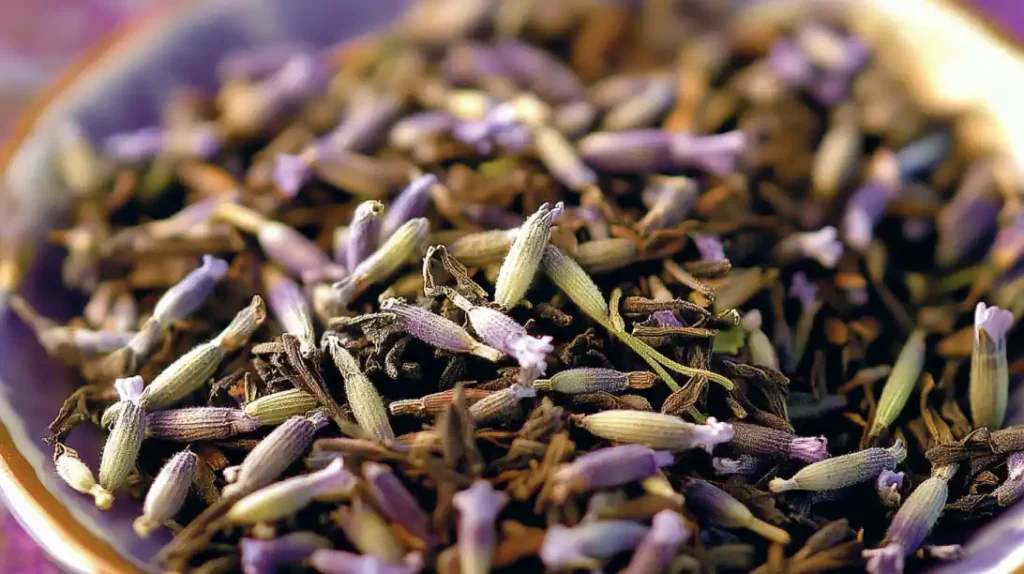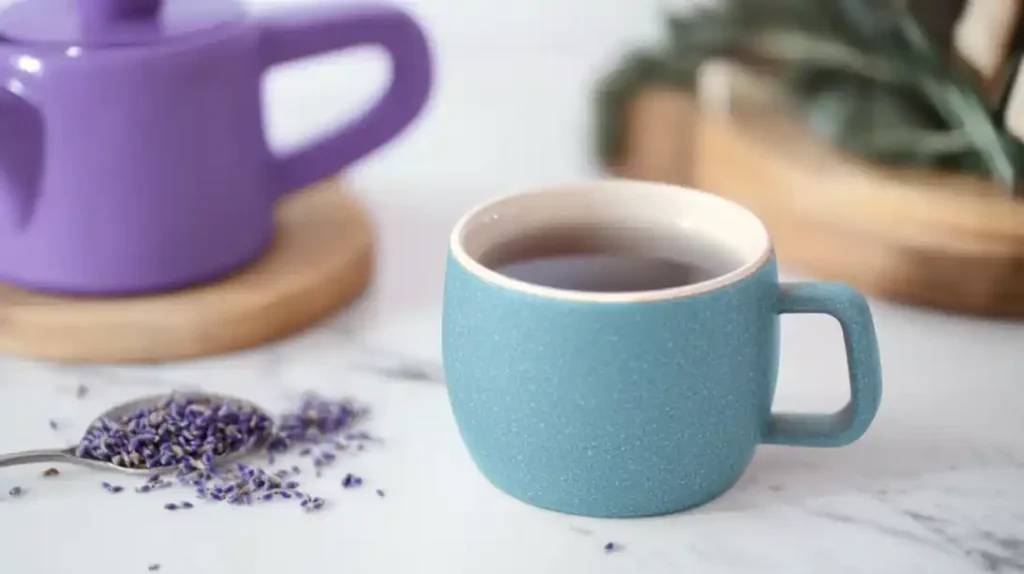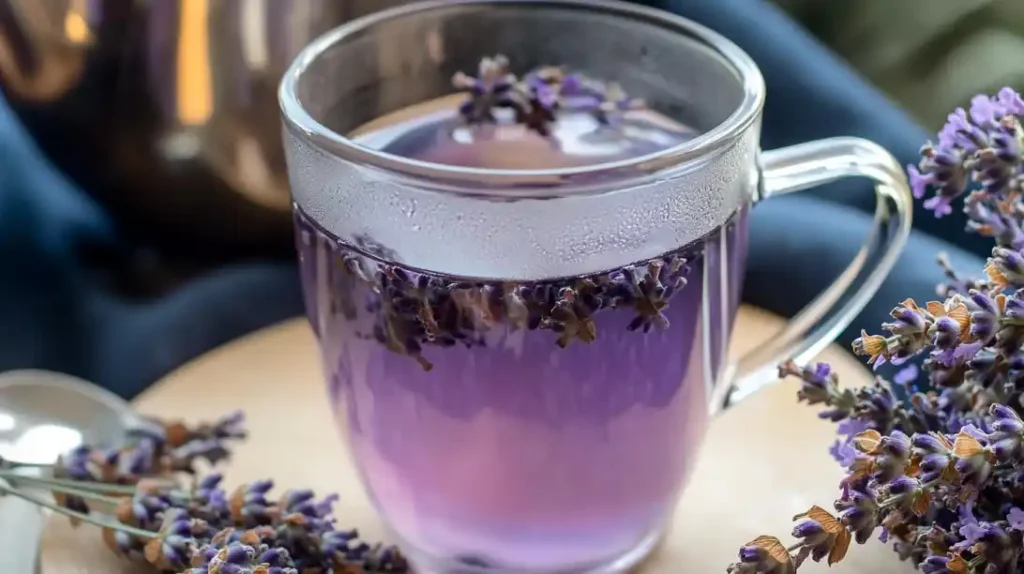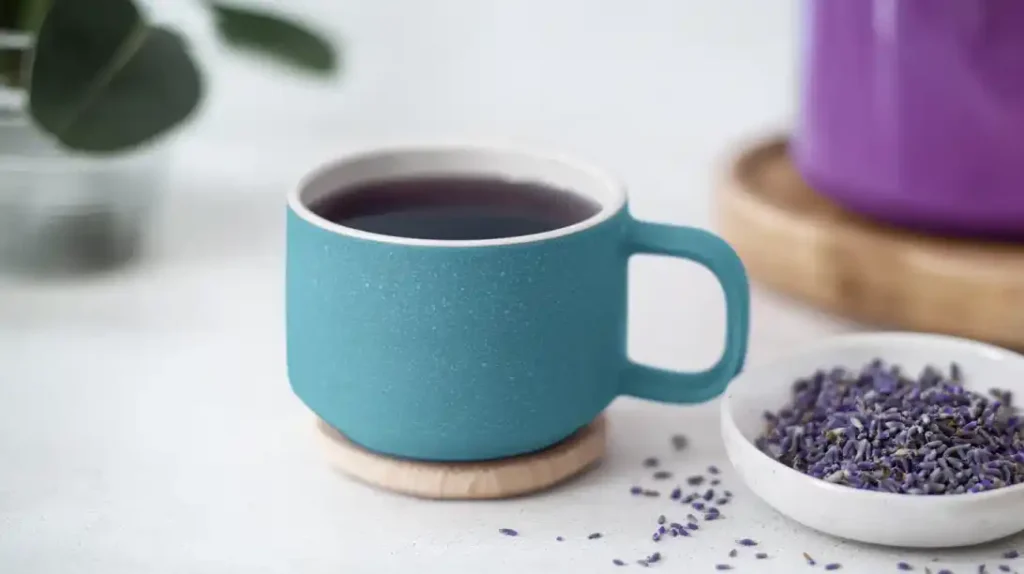Table of Contents
What is Lavender Tea?
Definition and Origin
Lavender tea is a herbal infusion made from the dried buds of the lavender plant, Lavandula angustifolia. While lavender is native to the Mediterranean region, it is now cultivated globally for its beauty, fragrance, and therapeutic uses.
Types of Lavender Used for Tea
Not all lavender is created equal! Culinary lavender, primarily Lavandula angustifolia, is the best for tea. Other types, such as Lavandula stoechas, may have a more intense aroma but can taste bitter.
Historical Context
Lavender in Ancient Cultures
Lavender’s history dates back to ancient civilizations. The Egyptians used it in their embalming practices, while the Romans cherished it for its calming scent and added it to bathwater—hence the name “lavare,” meaning “to wash.”
Historical Uses Beyond Tea
Beyond tea, lavender has been used for centuries to heal wounds, relieve headaches, and ward off evil spirits. Herbalists praised it for its versatility, making it a staple in traditional medicine cabinets.
Health Benefits
Calming Effects
One of lavender tea’s biggest claims to fame is its ability to calm your mind and body. The plant’s essential oils contain linalool and linalyl acetate, which interact with the nervous system to reduce anxiety and stress.
Sleep Enhancement
Struggling with insomnia? Lavender tea might help! Drinking a cup before bed can help you unwind, making it easier to fall asleep. The soothing aroma also plays a role in improving sleep quality. If you’re looking for a complete bedtime routine, pair it with natural sleep aids and quick healthy meals like those in this quick healthy lifestyle guide.
Digestive Health
Lavender tea isn’t just for relaxation—it’s also great for your stomach! It can ease symptoms of indigestion, nausea, and bloating by relaxing intestinal muscles.
Anti-inflammatory Properties
Lavender contains antioxidants that fight inflammation, potentially aiding in the management of conditions like arthritis and muscle pain. Drinking lavender tea regularly can help your body combat oxidative stress.
Skin Health
Thanks to its anti-inflammatory and antimicrobial properties, lavender can benefit your skin from the inside out. Some enthusiasts claim that drinking lavender tea helps reduce acne and other skin irritations.
How to Brew the Perfect Cup of Lavender Tea
Ingredients Needed
To brew a comforting cup of lavender tea, you’ll need:
- 1 tablespoon of dried culinary lavender buds
- 1 cup of hot (not boiling) water

Step-by-Step Brewing Process
- Heat water to around 200°F (93°C).
- Place the dried lavender buds in a tea infuser or directly in your cup.
- Pour the hot water over the lavender.
- Let it steep for 5-7 minutes.
- Strain the tea (if not using an infuser) and enjoy!

Tips for Enhancing Flavor
- Add honey or lemon to balance the floral notes.
- Blend with chamomile or mint for an extra calming effect.
- For iced tea, brew a stronger concentrate and chill before serving.
Lavender Tea and Aromatherapy
Connection Between Lavender Aroma and Relaxation
Lavender’s scent has been scientifically linked to relaxation. Aromatherapists often recommend inhaling lavender while sipping the tea to maximize the calming effects.
Combining Tea Drinking with Aromatherapy Practices
For a full sensory experience, light a lavender-scented candle or use an essential oil diffuser as you enjoy your tea. This combination enhances your relaxation ritual, creating a tranquil atmosphere.
Culinary Uses of Lavender
Lavender in Cooking
Lavender isn’t just for tea! Its floral notes can add a unique twist to savory and sweet dishes. Think lavender shortbread, honey-lavender ice cream, or even roasted chicken with a lavender herb rub. For more inspiration, try dishes that combine light floral flavors like in this mango margarita recipe.
Recipes Incorporating Lavender Tea
- Lavender Lemonade: Brew a strong lavender tea, then mix it with fresh lemon juice, honey, and water.
- Lavender-Infused Syrup: Perfect for drizzling over pancakes, waffles, or yogurt.
Side Effects and Considerations
Potential Allergic Reactions
Though rare, some people may experience allergic reactions to lavender. Symptoms can include itching, swelling, or skin irritation.
Recommended Consumption Limits
While lavender tea is safe for most people, it’s best to limit consumption to 1-2 cups per day. Overconsumption may cause nausea or dizziness in sensitive individuals.
Lavender Tea for Different Times of the Day
Best Time to Drink Lavender Tea
The beauty of lavender tea is that it can be enjoyed anytime. However, it’s particularly effective at night due to its sleep-inducing properties.
Nighttime vs. Daytime Use
- Night: Ideal for relaxing before bed.
- Day: Helps ease midday stress, especially during a busy work schedule. Lavender tea can also be paired with soothing drink ideas from these party snack tips.

DIY Lavender Tea Blends
Recipes for Homemade Tea Blends
- Lavender & Chamomile Blend: A double dose of relaxation.
- Lavender & Lemon Balm Blend: Great for uplifting your mood.
- Lavender & Rose Petal Blend: Adds a floral twist and enhances the tea’s aesthetic.
Adding Other Herbs and Spices
Experiment with ingredients like cinnamon, ginger, or vanilla for a customized tea blend. Try pairing lavender with culinary experimentation ideas like those found in this cottage cheese mac and cheese guide.
Choosing the Right Lavender for Tea
Criteria for Selecting Lavender
- Use organic, culinary-grade lavender to avoid harmful pesticides.
- Avoid lavender labeled for cosmetic use, which may contain additives.
Best Varieties for Tea-Making
The best variety is Lavandula angustifolia, known for its mild, sweet flavor. Avoid Lavandula x intermedia, which can taste too strong or bitter.

Sustainability and Sourcing
How to Source Sustainable Lavender
Look for lavender from farms that use eco-friendly practices, such as organic farming and reduced water consumption. Supporting local producers can also reduce your carbon footprint.
Impact of Sourcing on Quality
Sustainably sourced lavender often has a superior aroma and taste. Ethical farming practices help preserve biodiversity and ensure the plant’s longevity.
Lavender Tea in Different Cultures
Cultural Variations in Brewing Lavender Tea
In Morocco, lavender is blended with other herbs in traditional herbal infusions. In Europe, lavender tea is popular for relaxation, while some Asian cultures use it in wellness drinks.
How Different Cultures Utilize Lavender
Apart from tea, lavender is used in perfumes, cosmetics, and medicinal remedies across many cultures.
Comparing Lavender Tea to Other Herbal Teas
Similarities and Differences with Other Teas
Like chamomile and valerian, lavender tea promotes relaxation. However, its unique floral aroma sets it apart, offering both calming and aromatic benefits.
Why Choose Lavender Over Other Options?
Lavender tea is perfect if you’re looking for a balanced experience that soothes the senses and the mind. Its versatility makes it an ideal base for herbal infusions and blends, much like tarragon in these culinary and health tips.
FAQs
1. Can I drink lavender tea every day?
Yes, but it’s best to limit consumption to 1-2 cups daily to avoid side effects.
2. Does lavender tea help with anxiety?
Yes! Lavender’s natural compounds promote relaxation and may reduce anxiety levels.
3. Can I mix lavender tea with other herbal teas?
Absolutely! Popular blends include lavender with chamomile, mint, or lemon balm.
4. Is lavender tea safe during pregnancy?
Consult your doctor before drinking lavender tea while pregnant, as it may have mild hormonal effects.
5. How do I store dried lavender for tea?
Keep it in an airtight container, away from light and moisture, to preserve its aroma and flavor.
Conclusion
Lavender tea is a powerhouse of relaxation, sleep aid, and digestive support. Whether you’re enjoying a quiet moment at night or need a stress reliever during the day, this floral infusion has got you covered. So, why not brew yourself a cup and experience its magic?

